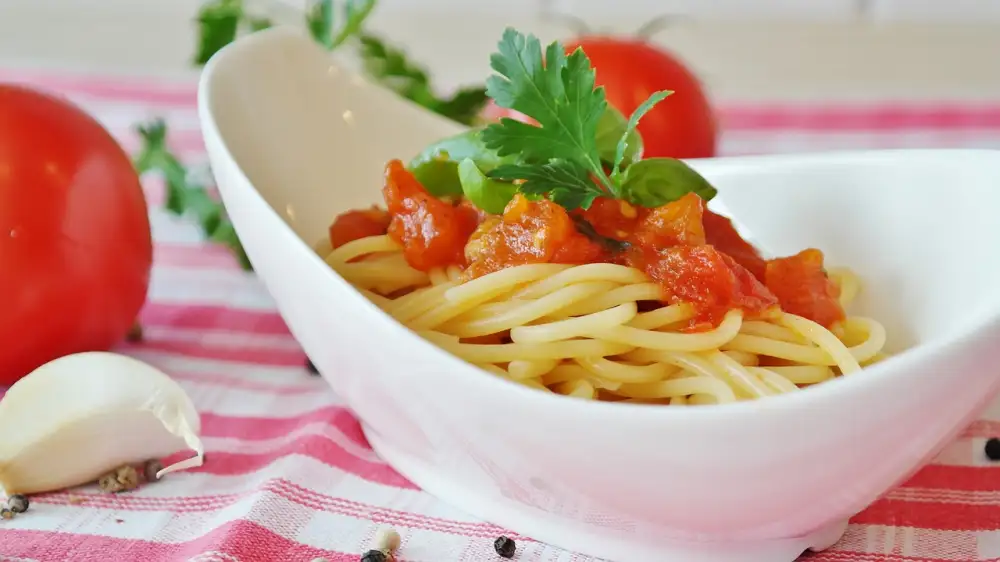Indulge in Creamy Perfection: Authentic Alfredo Sauce Recipe to Elevate Your Culinary Creations

Alfredo sauce is a classic Italian sauce known for its rich, creamy texture and indulgent flavor. Originating in Rome, it was created by Alfredo di Lelio in the early 20th century. The sauce is simple yet luxurious, traditionally made with just a few high-quality ingredients like butter, Parmesan cheese, and heavy cream. It has since become a beloved staple in Italian cuisine and is commonly served over pasta such as fettuccine to create a decadent dish that delights the taste buds.
Ingredients required for making Alfredo Sauce
To create the rich and creamy Alfredo sauce, you will need the following ingredients:
1. Butter: Unsalted butter is preferred for a more controlled salt content.
2. Heavy cream: This provides the luxurious texture and richness of the sauce.
3. Garlic: Fresh garlic cloves minced or garlic powder for flavor.
4. Parmesan cheese: Grated Parmigiano-Reggiano cheese for its nutty and salty taste.
5. Salt and pepper: To season the sauce to your liking.
6. Nutmeg (optional): A pinch of nutmeg adds a subtle warmth to the sauce.
These simple yet high-quality ingredients come together to create a velvety smooth Alfredo sauce that will elevate any dish it accompanies.
Step-by-step instructions for preparing Alfredo Sauce
To prepare a delicious Alfredo sauce, start by melting ½ cup of butter in a saucepan over low heat. Once melted, add 1 cup of heavy cream and simmer for about 5 minutes until it thickens slightly. Gradually whisk in 1 cup of grated Parmesan cheese until the sauce is smooth and creamy. Season with salt, pepper, and a pinch of nutmeg for added flavor. Continue to stir the sauce gently until everything is well combined and heated through. Remove from heat and let it sit for a few minutes before serving over your favorite pasta or dish.
Tips and tricks for perfecting your Alfredo Sauce
To perfect your Alfredo sauce, here are some tips and tricks to keep in mind:
1. **Use high-quality ingredients:** Opt for fresh cream, butter, and Parmesan cheese for the best flavor and texture.
2. **Grate your own cheese:** Pre-grated cheese often contains additives that can affect the sauce's consistency. Grating fresh Parmesan will result in a smoother sauce.
3. **Control the heat:** Be cautious not to overheat the sauce as it can cause the cheese to become stringy or the cream to curdle. Keep the heat low and stir constantly.
4. **Consistency is key:** If your sauce is too thick, add a splash of pasta cooking water to thin it out. If it's too thin, simmer it gently until it reaches your desired consistency.
5. **Seasoning:** Taste your sauce before serving and adjust the seasoning with salt and pepper as needed.
6. **Serve immediately:** Alfredo sauce is best served fresh off the stove when it's at its creamiest and most flavorful.
By following these tips, you'll be able to create a velvety smooth Alfredo sauce that will elevate any dish you pair it with.
Serving suggestions and variations for Alfredo Sauce
Serving suggestions for Alfredo Sauce:
- Toss the Alfredo sauce with freshly cooked fettuccine pasta for a classic and comforting dish.
- Drizzle the sauce over grilled chicken or shrimp for a protein-packed meal.
- Use it as a dipping sauce for breadsticks or garlic knots.
- Top baked potatoes with Alfredo sauce, bacon bits, and chives for a decadent twist.
- Add sautéed mushrooms, spinach, or sun-dried tomatoes to the sauce for extra flavor and texture.
Variations of Alfredo Sauce:
- Substitute heavy cream with half-and-half or milk for a lighter version.
- Mix in grated Parmesan cheese along with Romano cheese for a tangier taste.
- Infuse the sauce with minced garlic, chopped herbs like parsley or basil, or a pinch of nutmeg for additional depth of flavor.
- For a spicy kick, add red pepper flakes or cayenne pepper to the sauce.
- Experiment with different types of cheeses such as Gruyère, Asiago, or Pecorino Romano to create unique variations of the classic Alfredo sauce.
Published: 06. 04. 2024
Category: Recipes



